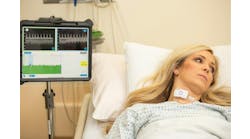The ECRI Institute rated infections from flexible endoscopes, missed clinical alarms and opioid-related deaths as some of the top health technology hazards.
To help hospitals prioritize technology safety efforts that warrant their attention and to reduce risks to patients, ECRI Institute publishes an annual list of top 10 health technology hazards. The 2016 Top 10 Health Technology Hazards includes both high-profile and unexpected issues, as well as ones that are emerging, such as hazards related to electronic health record.
"With all of the issues that hospital leaders are dealing with, technology safety can often be overlooked," Anthony Montagnolo, chief operating officer, ECRI Institute, said. "Based on our experience with independent medical device testing in our laboratory, accident investigations, and reported events, we're very aware of serious safety problems that occur."
The ECRI Institute’s safety engineers choose flexible endoscope reprocessing at the No. 1 health technology hazard, which specifically addresses the need to adequately clean flexible endoscopes before disinfection to help prevent the spread of deadly pathogens. In a statement, the ECRI Institute said that the organization’s own studies into endoscope cleaning and disinfection practices as well as a series of fatal Carbapenem-resistant Enterobacteriaceae (CRE) infections that attracted national media attention both last year and this year highlighted the safety risks associated with flexible endoscopes.
Failure to recognized and respond to an actionable clinical alarm was ranked No. 2 on the list, followed by failure to effectively monitor post-op patients for opioid-induced respiratory depression. Round out the top 5 health technology hazards were inadequate surveillance of telemetry-monitored patients and inefficient physician training on new OR technologies.
Other topics on the 2016 list include poor alignment between HIT configurations and facility workflow, which increases the opportunity for medical errors, as well as unsafe injection practices, gamma camera mechanical failures, misuse of intensive care unit ventilators and misuse of USB ports, which can lead to medical device malfunction.

